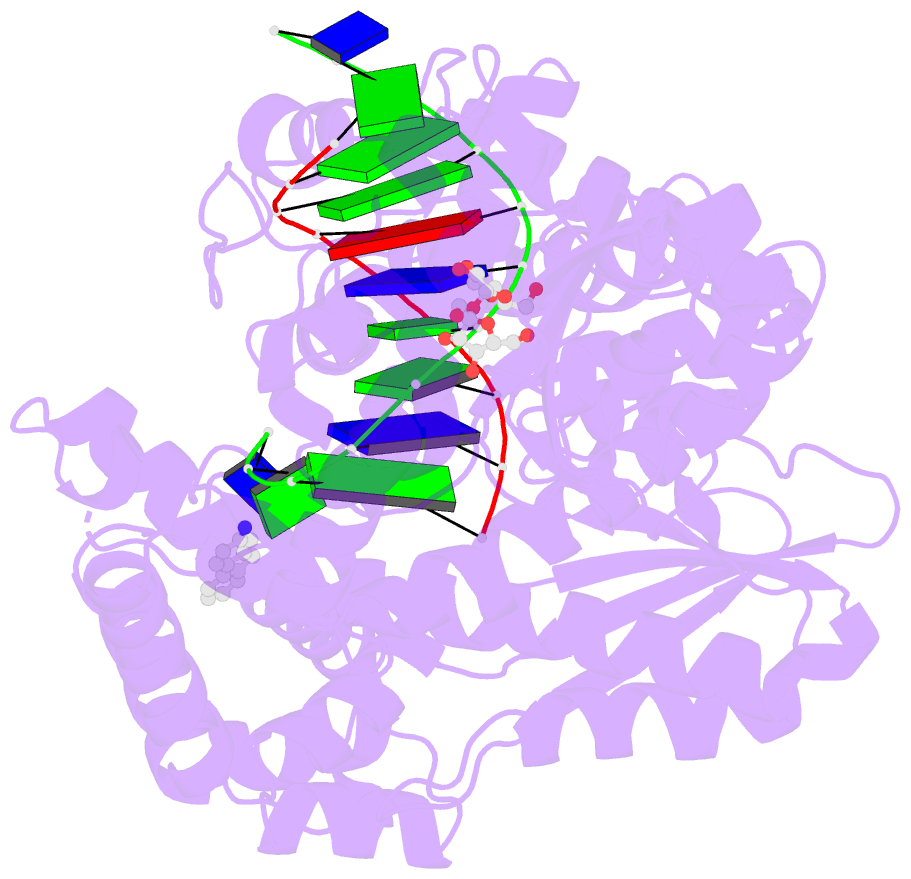Summary information and primary citation
- PDB-id
-
1ua0;
SNAP-derived features in text and
JSON formats
- Class
- transferase-DNA
- Method
- X-ray (2.1 Å)
- Summary
- Aminofluorene DNA adduct at the pre-insertion site of a
DNA polymerase
- Reference
-
Hsu GW, Kiefer JR, Burnouf D, Becherel OJ, Fuchs RPP,
Beese LS (2004): "Observing
translesion synthesis of an aromatic amine DNA adduct by
a high-fidelity DNA polymerase."
J.Biol.Chem., 279, 50280-50285.
doi: 10.1074/jbc.M409224200.
- Abstract
- Aromatic amines have been studied for more than a
half-century as model carcinogens representing a class of
chemicals that form bulky adducts to the C8 position of
guanine in DNA. Among these guanine adducts, the
N-(2'-deoxyguanosin-8-yl)-aminofluorene (G-AF) and
N-2-(2'-deoxyguanosin-8-yl)-acetylaminofluorene (G-AAF)
derivatives are the best studied. Although G-AF and G-AAF
differ by only an acetyl group, they exert different
effects on DNA replication by replicative and high-fidelity
DNA polymerases. Translesion synthesis of G-AF is achieved
with high-fidelity polymerases, whereas replication of
G-AAF requires specialized bypass polymerases. Here we have
presented structures of G-AF as it undergoes one round of
accurate replication by a high-fidelity DNA polymerase.
Nucleotide incorporation opposite G-AF is achieved in
solution and in the crystal, revealing how the polymerase
accommodates and replicates past G-AF, but not G-AAF. Like
an unmodified guanine, G-AF adopts a conformation that
allows it to form Watson-Crick hydrogen bonds with an
opposing cytosine that results in protrusion of the bulky
fluorene moiety into the major groove. Although
incorporation opposite G-AF is observed, the C:G-AF base
pair induces distortions to the polymerase active site that
slow translesion synthesis.





